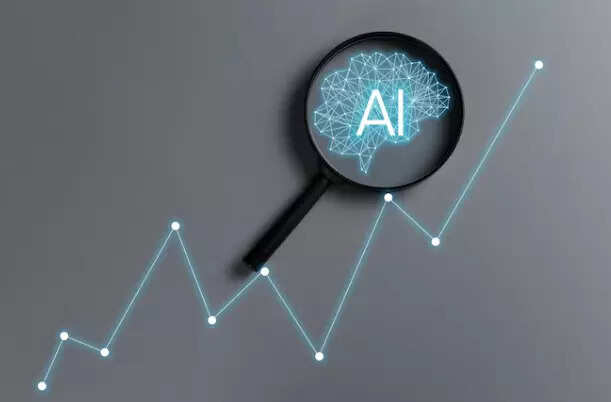- Next-Gen Technologies
- 9 min read
Next in AI: Will 2025 see innovation and pragmatism coexist?
As businesses gear up for a different outlook on AI in 2025, what are some new trends they anticipate? Let’s take a quick look at what tech leaders foretell for 2025.
All eyes are on what’s to come this year — the rise of intelligent agents, the shift from hype to measurable values, the importance of custom AI models, and the role of governance. As businesses gear up for a different outlook on AI in 2025, what are some new trends they anticipate?
Let’s take a quick look at what tech leaders foretell for 2025.
Data security will be at the heart of GenAI adoption
2024 saw organisations across the APAC region embedding AI into their business processes, particularly in cybersecurity. As we look towards 2025, one critical element stands out in the discourse around the adoption and evolution of generative artificial intelligence (AI): data security.

As businesses and consumers alike demand more from AI in terms of capability and security, generative AI's future looks increasingly intertwined with advancements in data protection. “By 2025, we predict that data security will not only be a benchmark for success in the AI industry but a deciding factor for trust and broad-scale AI adoption by industry and consumers,” Arvind mentions.
Coming to security, a recent PwC report highlighted a worrying statistic, that more than 40% of leaders say they do not understand the cyber risks posed by emerging technologies like GenAI. This leaves many organisations vulnerable to evolving threats. Therefore, while AI will become central to cybersecurity strategy for organisations in 2025, they will also crucially seek to secure their own AI models.
The hype around GenAI will wane, and businesses will take a pragmatic approach to AI

Remus shared, “2025 will see two camps emerging – the first includes businesses that have found successful use cases for GenAI and are reaping the fruits. According to McKinsey, 65% of organisations report regular use of GenAI, with meaningful cost reductions in HR and revenue increases in supply chain management.”
"The hype around GenAI will wane, and businesses will take a more pragmatic approach to AI," Remus said. However, not all industries will benefit from GenAI’s capabilities equally. He added, “The real value of GenAI lies in gaining knowledge and insights at scale – without good data, AI models will not be able to run successfully. Thus, businesses that are most likely to benefit are from sectors with large pools of trusted data that they can tap into for actionable insights.”
The second group of companies do not traditionally have large-scale databases to scale nor benefit as much from GenAI, and they will turn to traditional AI or deterministic ML models instead to drive efficiency and productivity.
Ultimately, Remus foresees that businesses will cease buying into the hype and shine of Gen AI, and instead focus on mapping their technology investment roadmap to their broader organisation goals.

Businesses will favour private and customised LLMs over public LLMs
With enterprise AI innovation taking centrestage, businesses will eschew public large language models (LLMs) in favour of enterprise-grade or private LLMs that can deliver accurate insights informed by the organisational context. According to a McKinsey study, 47% of companies are significantly customising and developing their own models currently.

Emilio further added, “Companies will find they can combine their data with existing models and tailor the experience for their customers at a fraction of today’s costs. Meanwhile, increased compliance risks associated with AI will drive regulated industries, like financial institutions and government agencies, to deploy models in air-gapped environments for greater control over data privacy and security and reduced latency.”
Intelligent and adaptive AI agents will surpass the limitations of traditional software
As per Emilio, the future of applications are intelligent, adaptive AI agents. A big trend ahead includes the changing future of applications, which is shifting toward intelligent, adaptable AI agents that surpass the limitations of traditional software. He predicted, “Rather than interacting with fixed interfaces and preset workflows, users will engage with AI agents that respond intuitively and learn over time. These AI agents will serve as the application itself, providing a more interactive and conversational experience. They will perform tasks, offer guidance, and learn from interactions in real-time. This change will lead to significantly more personalised and responsive applications, fundamentally reshaping how we use software.”
AI usage must broaden and building AI trust and governance will be paramount

“The need for AI oversight and accountability is important as organisations place emphasis on data democratisation, data stewardship and AI data pipelines as topmost important use cases. Organisations will need a strong data governance framework to manage their AI systems and ensure AI is transparent and used responsibly, while complying with AI regulations and policies,” Steven mulled.
As AI upskilling becomes imperative, AI-powered Copilots will bridge the existing security talent gap

Gareth explained them and stated, “Firstly, AI-powered copilots can automate routine work, freeing security professionals from manual, time-consuming tasks to deliver strategic impact. Secondly, AI-powered copilots can empower analysts with accessible insights to handle more complex tasks. Not only does this minimise training time needed for new analysts, it can also make security roles that previously required significant on-the-job experience and training more accessible to the talent pool.”
Developing a standard AI operating environment will be crucial

Vishal accentuated the need for optimising resource usage, thereby contributing to reduced CO2 emissions. “Such an operating environment will typically comprise a flexible and open AI platform that is highly scalable and provides common modules and services required by AI workloads such as a curated set of LLMs, data privacy and security, observability, and so on,” he concluded.
Multi-agent architecture is going to become the de facto reality

She stated, “For businesses that's tremendously exciting. It won’t happen next year, but by 2030, multi-agent architectures won't be revolutionary; it'll be ordinary. Businesses, from Fortune 500 giants to two-person startups, will harness this intelligence at their fingertips.”
Multi-agent architectures are arriving – just as there are competing cloud environments and AI foundation models, Nina expects to see multiple agentic architectures co-existing. Interoperability and avoiding vendor lock-in will be critical to realising the full potential of agentic reach and value.
“Some agents will be good at data integration, others at schema cleaning, text-to-SQL generation, automation, or building dashboards. Over time, these agents will learn to interact with one another. But humans must stay in the loop, or at least ‘over the loop’, for surveillance and governance,” Nina explained.


COMMENTS
All Comments
By commenting, you agree to the Prohibited Content Policy
PostBy commenting, you agree to the Prohibited Content Policy
PostFind this Comment Offensive?
Choose your reason below and click on the submit button. This will alert our moderators to take actions